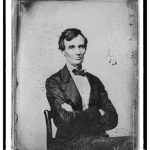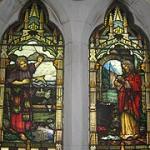
“Humility is willingness to submit to the will of the Lord . . . It is being teachable . . . Humility includes gratitude for God’s blessings and acknowledgment of your constant need for His help.”1 This description is deserved by many of Christ’s legions of devoted disciples. As we focus on His lifetime, we remember the humble strength of Mary Magdalene.
As we approach the Easter season, with our hearts and minds on Christ’s infinite and eternal sacrifice, we may also want to think of loving and devoted individuals who suffered grief at His pain and shared in triumphant joy at His resurrection. Mary Magdalene ministered tirelessly to Christ’s needs, supported Him faithfully, and was first to bear witness to the world of His Resurrection.
Selfless Service
Mary Magdalene has been recognized among the Savior’s strongest disciples. We find her name in the Gospels 12 times—few of the Savior’s apostles are noted more often.2
Many women in Christ’s time were named Mary, so the designation “Magdalene” was added for her. She was from the village Magdala, which is Hebrew for “tower.” A tribute to her by Margot Hovley states and applies this meaning: “Mary Magdalene became a tower of strength, both to her fellow disciples and to us today as well.”3
Mary knew the importance and power of healing. She first appears in the scriptures with the comment that Christ cast seven devils out of her. Devils knew who Jesus was and may seem likely to have attacked people He would encounter. When He asked those possessing one man how many were there, the answer was “legion”—an entire herd of swine were needed to give them somewhere to go.
Mary had only seven. Sister Hovley explained,
This miracle performed by the Savior had a profound effect on her life. It freed her of an unthinkable burden and left her with a deeply personal and unforgettable witness of the Savior’s divine power, mercy, and kindness.
From that time, Mary devoted her life to serving Jesus. She became part of a group of women, including Joanna, Susanna, a couple of additional Marys, and others mentioned in various lists, who traveled with Him, along with the apostles. As noted by Hilton and Hilton, “They actively and materially supported Him in His ministry.”4 Mary Magdalene was always among them and always listed first—like a tower of humble strength in every occasion.
Fearless Support
The group of women followed Christ to Jerusalem. They must have enjoyed His triumphal entry on Palm Sunday. But world-changing agony awaited Him, and danger haunted those who remained with Him. But the women did not deny him or ignore him—they stayed as close to Him as they could get. They were in the crowd that lined the streets to Calvary. Though they could do nothing to relieve His pain, their compassion, love, and loyalty reached out to Him.5
As He passed the grieving women, He spoke to them: ” Daughters of Jerusalem, weep not for me, but weep for yourselves, and for your children.” He prophesied of suffering to come (Luke 23:27-28). They continued to follow Him; they watched everything.
The loving strength of Mary the Lord’s mother and Mary Magdalene drew them close below the cross. Personal, emotional support for Him was more important than danger to themselves. He was able to speak to His mother, telling her that John would take care of her. In loving grief, they stayed to be close to Him until His suffering and His mission were complete.
Their pain was exquisite, but part of their blessing. Discussing the pain of loss, President Nelson taught, “We can’t fully appreciate joyful reunions later without tearful separations now. The only way to take sorrow out of death is to take love out of life.”6
Humble Strength to Witness
Mary Magdalene’s eyes were to be filled with light and life, but first they were filled with tears of sorrow.
The Empty Tomb
Joseph of Arimathea, a “secret disciple,” who–unlike the faithful women—feared the Jews, took the body of Jesus to a tomb he had hewn from rock. Mary Magdalene and another Mary followed to learn where they could anoint Him on Sunday.
The Gospels differ on some details of resurrection morning:
- How many women came to the sepulchre.
- Whether they witnessed the earthquake and stone removal.
- Whether any apostles came afterward, and who might have come.
Witness and Testimony, Humble Strength Fulfilled
The Gospels agree that Mary Magdalene was alone as she became the first witness of Christ’s resurrection whose testimony would go to the world. John recalled, “Mary stood without at the sepulchre weeping: and as she wept, she stooped down and looked into the sepulchre.”
The two angels, sitting where Christ had lain, asked, “why weepest thou.” She sobbed , “Because they have taken away my Lord, and I know not where they have laid him.” As she turned and saw Jesus, she did not recognize Him. Assuming He was a gardener, she pleaded, ” “Tell me where thou hast laid him, and I will take him away.” Elder D. Todd Christofferson suggested, “The Lord may have allowed Mary Magdalene [this moment] to grieve and to express her pain.”7
“Mary.” The Savior spoke her name.
As James E. Talmage expressed,
One word from His living lips changed her agonized grief into ecstatic joy . . . She turned, and saw the Lord. In a transport of joy she reached out her arms to embrace Him, uttering only the endearing and worshipful word, ‘Rabboni,’ meaning My beloved Master.8
“My beloved master.” This recognition echoes through the ages—the joyful but humble strength of Mary Magdalene’s witness and testimony affecting those of more loving disciples than we could possibly imagine.













